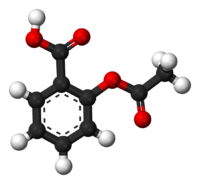
Photo from wikipedia
Mitochondria have been widely accepted as the main source of ATP in the cell. The inner mitochondrial membrane (IMM) is important for the maintenance of ATP production and other functions… Click to show full abstract
Mitochondria have been widely accepted as the main source of ATP in the cell. The inner mitochondrial membrane (IMM) is important for the maintenance of ATP production and other functions of mitochondria. The electron transport chain (ETC) generates an electrochemical gradient of protons known as the proton-motive force across the IMM and thus produces the mitochondrial membrane potential that is critical to ATP synthesis. One of the main factors regulating the structural and functional integrity of the IMM is the changes in the matrix volume. Mild (reversible) swelling regulates mitochondrial metabolism and function; however, excessive (irreversible) swelling causes mitochondrial dysfunction and cell death. The central mechanism of mitochondrial swelling includes the opening of non-selective channels known as permeability transition pores (PTPs) in the IMM by high mitochondrial Ca2+ and reactive oxygen species (ROS). The mechanisms of reversible and irreversible mitochondrial swelling and transition between these two states are still unknown. The present study elucidates an upgraded biophysical model of reversible and irreversible mitochondrial swelling dynamics. The model provides a description of the PTP regulation dynamics using an additional differential equation. The rigidity tensor was used in numerical simulations of the mitochondrial parameter dynamics with different initial conditions defined by Ca2+ concentration in the sarco/endoplasmic reticulum. We were able to estimate the values of the IMM rigidity tensor components by fitting the model to the previously reported experimental data. Overall, the model provides a better description of the reversible and irreversible mitochondrial swelling dynamics.
Journal Title: Mitochondrion
Year Published: 2019
Link to full text (if available)
Share on Social Media: Sign Up to like & get
recommendations!